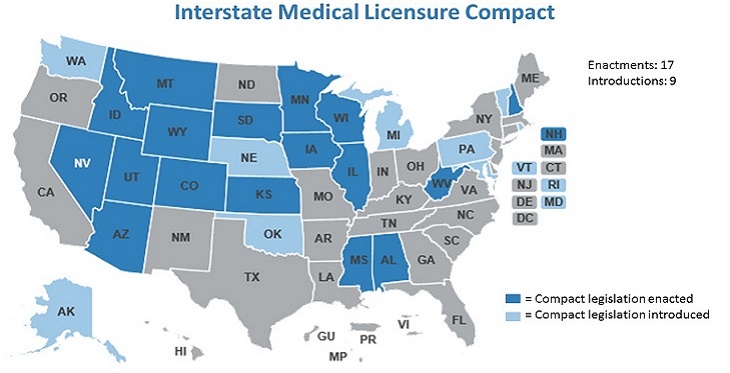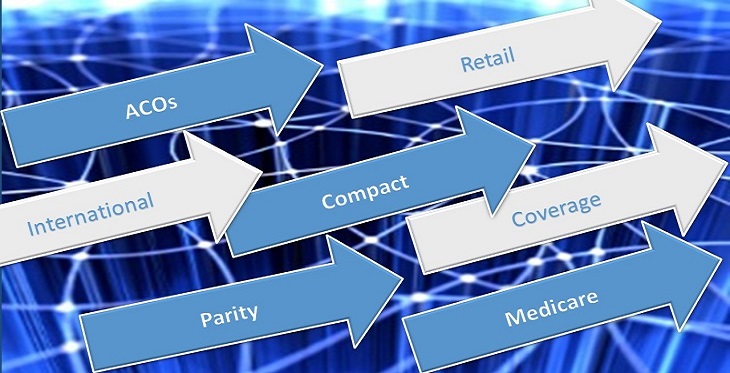Physicians practicing telemedicine have celebrated the implementation of the Interstate Medical Licensure Compact (“Compact”), which permits physicians practicing telemedicine to easily and quickly obtain a license to practice medicine in a number of states. However, physicians becoming licensed in multiple states should be aware of the serious responsibilities and risks of multi-state licensure.
The Arizona Telemedicine Program Blog, Category: Policy
As the anniversary of our nation’s Declaration of Independence approaches, I’ve been thinking about a different kind of independence: The growing freedom from constraints on telehealth coverage.
Several recent and upcoming changes in telehealth policy are converging – nationally and here in Arizona – to reduce limitations on coverage.
Arizona is now one of 17 states to sign on to the Interstate Medical Licensure Compact, which provides an expedited licensing process for physicians interested in practicing in multiple states.
Another nine states have introduced legislation to join the Compact, which is expected to expand access to health care for people living in rural and underserved areas of the country, while facilitating the use of telemedicine in those areas.
Last year showed us that telemedicine continues to be an innovative alternative to traditional brick-and-mortar health care. The number of providers offering telemedicine services notably increased, and several states enacted laws requiring health plans to cover telemedicine. Here are four key trends that will drive the continued growth of telemedicine to transform health care in 2016.
Telemedicine is a relatively new way to bring medical examinations, diagnosis and treatment services to a patient over a network. Telemedicine solutions that include peripherals, such as a stethoscope, otoscope and high quality zoom camera, bring patients face-to-face with an offsite physician who can quickly examine, diagnose and provide treatment options during an off-hours emergency.
The use of a telemedicine system within a skilled nursing facility (SNF) not only opens dialogue between healthcare professionals at different facilities, but also allows an offsite physician to more rapidly access and diagnose the patient and recommend treatment based on a first-hand evaluation, offering an even greater level of patient care. With these benefits in mind, telemedicine is becoming increasingly important for skilled nursing facilities facing a wave of new penalties stemming from changing rules governing patient readmissions.




